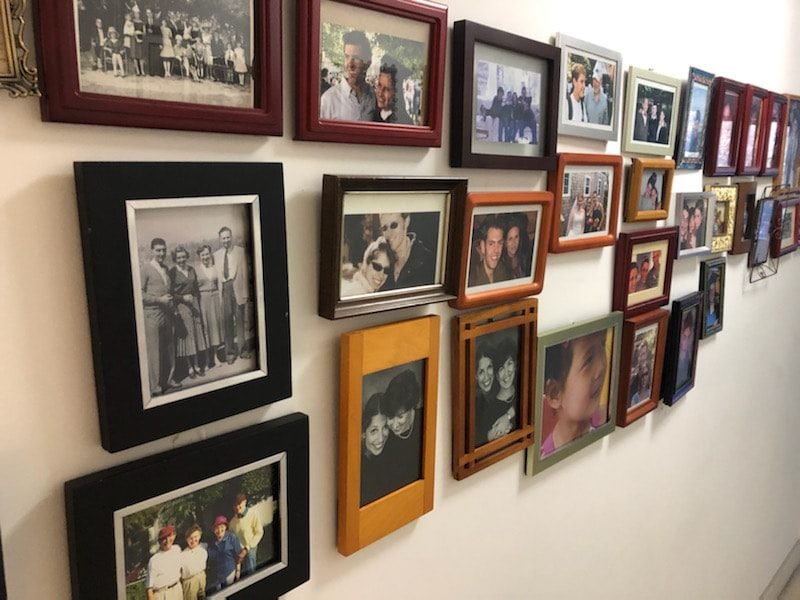Moments in Time
The hallway is filled with photographs of the departed. Not only the dead, but those who, for reasons too numerous and complex to enumerate, have drifted away in the currents of time.
Even those who are still living are no longer the people portrayed in the hallway photographs. Other than in memory, no one on the wall exists anymore. They’ve either moved on to the next act in their journeys, or dropped off the far end of the stage.
The initial intent behind the gathering and displaying of these pictures has changed. At first, it was a historical record of photographs, already old , when they were hung in the original hallway. But as the decades passed—almost eight of them—and as the hallway moved from one country to another and one home to another—new, bright photos were added to the older black-and-whites. In time the new colored ones faded, their corners curled, and the record continued to expand further down the hallway.
The photographs are arrayed chronologically. At the far end, the oldest remain fixed in time, sepia ancients in beards and high-necked dark dresses, whose worlds were already outdated a century ago. The families, dressed in their good clothes, posed before drop-cloths in small villages in Latvia and farming towns in Germany as they created a record of their time. The serious children in these ancient photos, children with dark, inscrutable glances, have lived their lives and passed on. The offspring they produced are now ancient, although they hang somewhere on the wall as children themselves. In one snapshot they are young marrieds in their twenties, on holiday somewhere in the mountains, vacationing with another couple. The two women have been best friends since they were six. That’s an 85-year friendship.
Interspersed among the pictures are group portraits taken at major family events. Dozens gathered for these photos, the elders seated, three rows lined shoulder to shoulder behind them. Some of us remember every face in the group. There are Grandpa and Grandma and their siblings, pictured as children in the oldest photos. At the time the group portrait was taken, they seemed like fossils to this little boy. And to the little boy, now grown old himself, they still appear ancient—even though on calculation they turn out to be younger than I am today. They were born in Germany, Latvia, Lithuania and Russia and lived out their lives in South Africa. Difficult lives, for the most part. They worked hard, ate badly, didn’t exercise, and smoked as if their lives depended on it.
There is no photo of this, but there may as well be one—it remains as clear in my memory as if it had been snapped yesterday. It is 1956, and I am eight years old, back home in Johannesburg after having my tonsils out. In bed, I am eating ice cream to sooth my throat. Sunday afternoon, my grandmother’s friends have come for tea to see how the young patient is doing. Four big-bellied men in suits and ties, sitting in chairs brought in for the occasion, drinking tea and smoking. I have no idea why lighting cigars might be a bad idea after throat surgery, but it seems unwise to this little boy. My physician father returns home from doing rounds at the hospital and bursts into my room. He throws open the windows and with surprising politeness ushers all the elderly smokers out. The fury and horror on my father’s face are as clear as if it happened yesterday instead of sixty-odd years ago. My father always speaks his mind, and what he despises most in human interaction is and has always been deception. For the life of me, I will never understand the social dynamic that prevented him from expressing his rage that not one of the visitors had the good sense not to smoke in my room.
The mature adults on the wall are now in their middle years or have entered early old age. The young mothers and fathers are now parents of teenagers or are themselves grandparents. The long-limbed teenage grandchildren in the hallway lounging on the grass or playing leapfrog on the beach are now young marrieds, some with children of their own, bent on making their marks on the world. The many babies and toddlers, each one adorable and beloved, have become, in the blink of an eye, an army of teenagers, determined as every generation of teenagers before them, to design their own paths in their own ways.
Nothing better illustrates the unstoppable passage of time than this wall of faces and fashions, each capturing an instant. And to those who remember, each moment brings to mind countless others stretching from generation, to generation, to generation. For those who walked past them daily, these images provided a wonderfully satisfying sense of continuity.
Before photography, those who could afford it hired portrait painters to create a historical record. Then came formal portraits, followed by more relaxed snapshots. Now we photograph everything, all the time. Four generations hence, what record will our descendants have of our presence in the world? It will take our grandchildren a lifetime to go through photos snapped of them on cell phones and stored on the Cloud. It’s hard to imagine that such a profusion of images will be valued in the same way we value the two or three pictures, taken at great effort and cost, by our grandparents.

